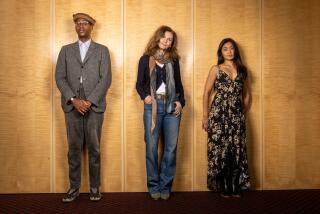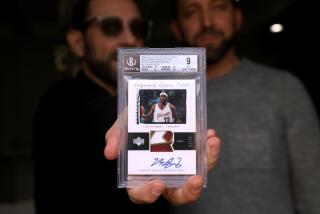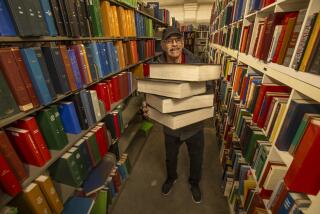Hoaxes from the Holy Land
Israeli authorities called it âthe fraud of the centuryâ: fakes passed off as archaeological finds with biblical ties. The most notorious object was the James ossuary, a limestone box inscribed in Aramaic with the words âJames, son of Joseph, brother of Jesus.â Five men were charged, and the trial has been dragging on for three years.
But it may all be crashing to a halt. A few weeks ago, the judge -- who is hearing the case without a jury -- told the government lawyers heâs not convinced the objects are forgeries and suggested they consider dropping the matter. If the authorities canât make their case, experts warn that the antiquities market -- and a proof-hungry religious public -- inevitably will be fed groundbreaking biblical âdiscoveriesâ as far-fetched as Solomonâs crown and Abrahamâs sandals.
The James ossuary first made world news in 2002. Hershel Shanks, an American lawyer and publisher of an archaeology journal for Bible history enthusiasts, arranged a news conference and presented the box as the first archaeological evidence of the materiality of Christ. Shanks then wrote a book, sold the film rights and arranged a blockbuster museum exhibition in Canada. In 2003, tens of thousands of people waited in line in an Ontario January to file past it, some in silent prayer.
The James ossuary, however, was not discovered by archaeologists working at a dig. It emerged from the private antiquities market in Israel -- a colorful, murky world in which a small group of licensed dealers buy and sell pieces of ancient history often illegally plundered from one of the 30,000 archaeological sites in Israel and the West Bank.
In Israel, news of the James ossuary was quickly overshadowed by another explosive discovery in early 2003 -- again from the private market -- of an inscribed stone purported to be the first archaeological evidence of Solomonâs temple. Nicknamed the Joash Tablet, the sandstone held 16 lines of text remarkably similar to a passage in the Old Testament referring to repairs made to the temple.
The tablet was never officially exhibited: A man formerly with the Israeli secret service had been running around Israel with it in a case handcuffed to his wrist, showing it to selected authenticators. Israeli authorities jumped in to investigate because of the tabletâs obvious potential to inflame the ever-contentious issue of who should control the Temple Mount in Jerusalem.
After a yearlong investigation, detectives traced the tablet and the ossuary to the same Tel Aviv collector, Oded Golan, who admitted that he had purchased them but could never explain from whom. They also found in his apartment and warehouses what they thought were materials for making fakes, suspicious half-made objects and plans for more. A panel of Israeli scholars was convened to inspect the tablet and ossuary and declared both modern forgeries.
Golan and four others were charged with fraud, involving more than a dozen forged objects purportedly related to biblical events that they sold for hundreds of thousands of dollars, mostly to private collectors. Three of the defendants have since been dropped from the case. The only remaining defendants, Golan and a prominent Israeli antiquities dealer named Robert Deutsch, both maintain their innocence.
Prosecutors have been hamstrung. A craftsman based in Cairoâs Khan al Khalili souk told police he made some objects for the collector, but he wasnât inclined to testify and they cannot compel him to come to Israel. So prosecutors instead called a long list of archaeologists and epigraphers, experts in the minutia of ancient Christian and Jewish artifacts. These men and women, accustomed to working on dusty digs or answering questions from somnambulant students, were no match for nimble, expensive attorneys, among the best in Israel, working for the defense.
One by one, they either contradicted themselves on various scientific technicalities or had their conclusions ripped apart by the defenseâs expert witnesses. One veteran Israeli archaeologist, Meyer Ben Dov, was so disheartened by what was happening that he told me âarchaeology is on trialâ -- and it did not appear to be winning.
The case isnât over, but after the judgeâs comments last month, the American publisher Shanks issued a news release calling the James ossuary âvindicated,â a claim religious bloggers have since disseminated worldwide.
Readers of Shanksâ Biblical Archaeology Review and others who insist on the authenticity of the objects willfully ignore the evidence involving the other, less famous objects in the trial. They view the case as a grudge match, in which secular scientists are pitted against religious believers, or Israel, or the Bible itself. This is patently ridiculous but not surprising. Biblical archaeology operates on an emotionally charged -- and in many ways lawless -- border where modern science meets ancient belief. The desire of the faithful for material proof drives scholarship as much as anything actually dug up from the sands of the Holy Land.
The scholars who authenticated the alleged forgeries havenât been accused of any legal wrongdoing, nor have the people who profited from book, movie and museum deals. Biblical archaeology is rife with such characters -- some with advanced degrees -- who are expert at generating hype. They push hot buttons in theology and Middle East politics guaranteed to get attention and, eventually, money.
The trial will resume in six months, so prosecutors have a chance to pull together better evidence. But the potential collapse of the James ossuary case confirms two things. First, the underfunded and understaffed Israeli Antiquities Authority -- charged with policing the antiquities trade and protecting dig sites -- is not up to the task of rooting out and exposing world-famous fakes. Second, the Israeli legal system canât be the last word on the authenticity of objects that have the potential to excite millions of faithful.
So while policing the private trade in objects is a matter for the Israeli authorities, sober and serious biblical scholars need to take steps to shield the public from their more ruthless colleagues. All future finds with remarkable biblical connections emerging from the private market ought to be inspected by a team of disinterested experts from around the world before anyone calls a news conference.
The only trouble is, in this field, disinterested individuals are the rarest finds of all.
Nina Burleigh is the author of âUnholy Business: A True Tale of Faith, Greed and Forgery in The Holy Land.â
More to Read
Sign up for Essential California
The most important California stories and recommendations in your inbox every morning.
You may occasionally receive promotional content from the Los Angeles Times.










